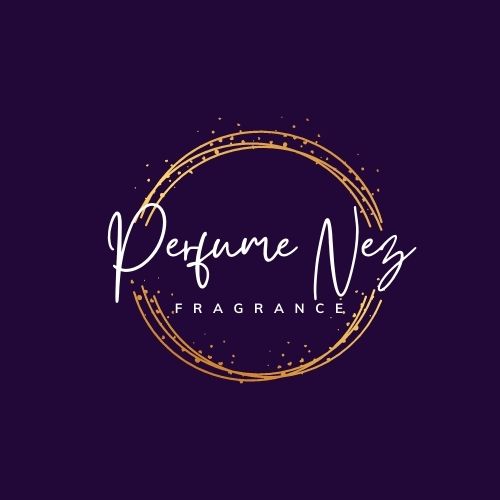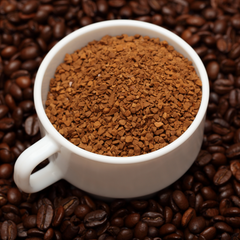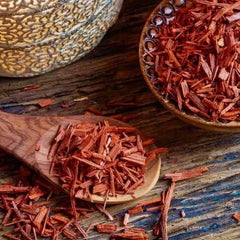What Does Teakwood Smell Like?
Click For Affordable Inspired Perfume Alternatives

Embark on a aromatic journey to the heart of forests and discover the captivating scent of teakwood. Known for its rich and earthy aroma, teakwood has been a prized fragrance in the world of perfumery and woodworking. Join us as we explore the question: What does teakwood smell like?
What Does Teakwood Smell Like?
The fragrance of teakwood is a harmonious blend of earthy warmth, woody depth, and a hint of leatheriness. Imagine the scent of a dense forest, with sun-dappled leaves, aged wood, and a touch of sophistication. Teakwood's aroma is a celebration of nature's elegance, offering a comforting and grounding olfactory experience.
Teakwood's Earthy Elegance
Enter the world of teakwood, where the fragrance is an embodiment of earthy elegance. Join me on a fragrant journey to discover the captivating aroma that defines the essence of teakwood.
Woody Resonance: A Forest Retreat
As you encounter teakwood, the first olfactory impression is a resonance of woodiness, reminiscent of a tranquil forest retreat. Picture the strength of aged trees, the robustness of sturdy branches, and the grounding aroma of teakwood. Teakwood's fragrance is a celebration of the earth's resilience, instantly transporting you to a serene woodland with its comforting and enveloping character.
Leathery Undertones: A Touch of Sophistication
The scent of teakwood carries subtle leathery undertones, adding a touch of sophistication to its earthy profile. This leathery nuance creates a nuanced and complex fragrance that evokes the image of well-crafted leather furniture or antique wooden artifacts. Teakwood's aroma is a testament to its versatility, offering a comforting yet refined olfactory experience.
Warmth of Sunlit Woods: A Golden Glow
While predominantly earthy, there's a warm and golden glow to teakwood's scent. It captures the essence of sunlit woods, where the interplay of light and shadows enhances the richness of the fragrance. This warmth adds depth to the aroma, creating a well-balanced composition that is both comforting and invigorating. Teakwood's scent is like basking in the gentle sunlight filtering through a dense forest canopy.
Aged Authenticity: Essence of Mature Wood
Delve deeper into the scent, and you may notice an aged authenticity that characterizes teakwood's fragrance. It's as if the aroma carries the essence of mature wood, reflecting the resilience and character developed over time. This adds a unique dimension to teakwood's olfactory profile, creating a nostalgic and grounding experience.
Teakwood's Forest Symphony
Hence, teakwood's fragrance is a forest symphony of woody resonance, leathery undertones, warm golden glow, and aged authenticity. It stands as a testament to the enduring and sophisticated qualities of this revered wood, offering a sensory experience that is both comforting and timeless. Teakwood, with its rich and complex aroma, invites us to savor the natural notes found within its grain, a fragrant journey that unfolds with every enchanting whiff.
Factors Influencing the Scent of Teakwood Fragrance Oil
Teakwood fragrance oil is a carefully crafted composition designed to capture the rich and earthy aroma of teakwood, commonly associated with Tectona grandis. The formulation of this fragrance involves a thoughtful combination of aromatic compounds. Here are several factors that contribute to the warm and woody scent of Teakwood fragrance oil:
Fragrance Composition: Teakwood fragrance oil is a meticulously blended mixture of various aromatic compounds, chosen to replicate the characteristic scent of teakwood. This composition may include both synthetic and natural ingredients to achieve the desired olfactory profile.
Wood Essence: At the heart of the fragrance lies the essence of teakwood. Notes of aged wood, with a perfect balance of earthiness and warmth, are intricately blended to mirror the comforting and grounding aroma of teakwood.
Synthetic vs. Natural Components: Teakwood fragrance oil often combines both synthetic and natural ingredients. Perfumers make choices to strike a balance between authenticity, cost considerations, and sustainability in the selection of these components.
Extraction Method: The method used to create Teakwood fragrance oil, whether through distillation or extraction, plays a crucial role in defining the aromatic profile. Specific extraction methods contribute to the faithful recreation of the warm and woody scent.
Additional Earthy and Woody Notes in the Blend: The fragrance may incorporate additional earthy elements or subtle woody notes to enhance complexity. These complementary notes contribute to the overall richness of the scent, capturing the essence of teakwood.
Quality of Ingredients: The quality of raw materials, including the source of essential components, directly influences the warmth and authenticity of the teakwood scent in the fragrance oil.
Perfumer's Artistry: The expertise and creativity of the perfumer or fragrance creator are crucial. Perfumers leverage their skills to balance different components, creating a distinctive and delightful teakwood fragrance.
Regulatory Compliance: Adherence to regulatory standards and restrictions on certain fragrance ingredients is crucial. Compliance with safety guidelines requires careful consideration of ingredient choices to ensure the fragrance is safe for use.
Usage in Products: Teakwood fragrance oil can be incorporated into various products, including perfumes, candles, room sprays, and bath products. The interaction with other ingredients in specific product formulations can influence how the teakwood scent is perceived.
Product Type and Concentration: The concentration of Teakwood fragrance oil in a product affects the strength and longevity of the scent. Higher concentrations may be suitable for perfumes, while lower concentrations work well for candles, soaps, or room sprays.
Storage Conditions: Proper storage conditions for Teakwood fragrance oil, both before and after formulation, are essential to maintain its stability and scent. Storing it in a cool, dark environment helps preserve the warmth and authenticity of the fragrance.
Consumer Preferences and Trends: Formulations of Teakwood fragrance may adapt to changing consumer preferences and market trends. The popularity of warm and woody scents or unique blends may influence product formulations.
Artisanal vs. Commercial Production: Differences between artisanal and commercial production of Teakwood fragrance oil may impact ingredient sourcing, formulation, and overall quality. Artisanal methods may emphasize craftsmanship and unique blends.
Post-Formulation Processing: Additional processes, such as aging or filtering after the formulation of the fragrance oil, may influence the final scent and contribute to the desired characteristics.
Exploring different formulations of Teakwood fragrance oil allows consumers to experience a range of warm and woody scents reminiscent of the comforting aroma of teakwood. Individual preferences play a significant role in selecting the perfect Teakwood fragrance for various applications.
What to Look for When Choosing Teakwood Fragrance Oil
Selecting a teakwood fragrance oil allows you to enjoy the warm and woody aroma associated with this revered wood. Whether used in candles, diffusers, or personal care products, consider these factors to ensure you choose a high-quality and authentic teakwood fragrance oil:
Woody Authenticity: Seek a teakwood fragrance oil that authentically captures the rich, earthy, and woody scent of real teakwood. Look for a fragrance that embodies the unique warmth and depth characteristic of quality teakwood.
Natural vs. Synthetic: Determine whether the fragrance oil is derived from natural sources or is synthetically produced. Natural teakwood oils can provide a more nuanced and realistic scent, closely resembling the aroma of actual teakwood.
Blend Ingredients: Check the blend of ingredients in the fragrance oil. A well-crafted combination of natural and synthetic components can contribute to a balanced and long-lasting teakwood fragrance.
Intensity Level: Consider the intensity level of the teakwood fragrance. Some may prefer a subtle and comforting scent, while others may desire a more pronounced and enveloping aroma. Look for a fragrance that aligns with your desired level of intensity.
Versatility: Choose a fragrance oil that is versatile and suitable for various applications. Whether used in candles, soaps, lotions, or diffusers, versatility allows you to enjoy the warm and woody scent in different settings.
Packaging: Assess the packaging of the fragrance oil. Opt for a bottle that is dark or opaque to protect the oil from light exposure, preserving its warmth and authenticity and preventing deterioration over time.
No Residue or Discoloration: Ensure that the teakwood fragrance oil leaves no residue or discoloration when incorporated into different products. A high-quality oil should seamlessly integrate into various mediums without causing unwanted effects.
Manufacturer Reputation: Research the reputation of the manufacturer or brand. Choose well-established brands with positive reviews, as they are more likely to produce reliable and high-quality fragrance oils.
Testing Options: Look for fragrance oils that offer testing options or sample sizes. This allows you to experience the scent firsthand before committing to a larger quantity, ensuring it aligns with your preferences.
Ethical and Sustainable Practices: Consider the manufacturer's commitment to ethical and sustainable practices. Brands that prioritize responsible sourcing and environmentally friendly production contribute to a more conscientious choice.
By considering these factors, you'll be better equipped to choose a teakwood fragrance oil that not only aligns with your preferences but also ensures a high-quality and comforting olfactory experience in your chosen applications.
Where to Find Reputable Teakwood Fragrance Oils Discovering high-quality teakwood fragrance oils requires exploration and a keen eye for authenticity. Whether you're crafting candles, soaps, or perfumes, here are some sources to find reputable teakwood fragrance oils:
Specialty Candle and Soap Supply Stores: Explore specialty stores dedicated to candle-making and soap supplies, as they often carry a variety of fragrance oils, including unique scents like teakwood. These stores may offer options suitable for crafting candles, soaps, and other scented products.
Online Fragrance Oil Retailers: Browse reputable online platforms specializing in fragrance oils. Websites and retailers dedicated to aromatherapy, candle making, or DIY crafting may have an extensive selection of teakwood fragrance oils. Check product descriptions and customer reviews for authenticity and quality.
Artisanal or Handmade Markets: Attend artisanal markets or craft fairs where independent sellers showcase handmade products. Artisan vendors may create unique and carefully crafted teakwood fragrance oils, providing an opportunity to explore distinct options.
Local Essential Oil or Perfume Shops: Specialty shops focusing on essential oils or perfumes may carry teakwood fragrance oils. These stores often prioritize high-quality scents and may offer a range of warm and woody aromas.
Online Marketplaces: Platforms like Etsy or other online marketplaces featuring handmade or artisanal products can be sources for teakwood fragrance oils. Look for sellers with positive reviews and detailed information about their products.
Aromatherapy Stores: Aromatherapy stores often carry a variety of fragrance oils for different applications. Inquire about the availability of teakwood scents to add a warm and comforting aroma to your living space.
Local Woodworking or Craft Supply Stores: Visit stores that cater to woodworking or craft supplies, as they may carry fragrance oils specifically designed for enhancing the scent of wood. Teakwood fragrance oils can be a delightful addition to projects involving wood-based materials.
Specialty Perfume Retailers: Explore specialty perfume shops that focus on unique and exotic fragrances. These stores may carry teakwood fragrance oils known for their distinctive and warm notes.
Word of Mouth: Seek recommendations from friends, family, or members of fragrance communities for trusted sources of teakwood fragrance oils. Personal experiences and suggestions can guide you to reputable suppliers known for quality and authenticity.
Check Ingredients and Descriptions: Before making a purchase, carefully read product descriptions and check ingredient lists for teakwood fragrance oils. Authentic and reputable sellers provide clear information about the composition and intended use of their products.
Note: Teakwood fragrance oils can bring a warm and woody note to your DIY projects. Ensure that the fragrance oil you choose aligns with your intended use, whether it's for candles, soaps, diffusers, or other creative endeavors. Follow safety guidelines provided by the manufacturer for proper usage.
20 Questions and Answers about Teakwood:
-
What is teakwood? Teakwood is the wood derived from the teak tree (Tectona grandis), a tropical hardwood tree native to South and Southeast Asia.
-
Why is teakwood popular in perfumery? Teakwood is valued in perfumery for its rich, warm, and earthy aroma, which adds depth and complexity to fragrances.
-
How is teakwood oil extracted for perfumery? Teakwood oil is usually extracted through steam distillation of the wood. This process captures the aromatic compounds present in the wood.
-
What are the main fragrance notes associated with teakwood in perfumery? Teakwood is known for its notes of woodiness, earthiness, and a subtle sweetness. It often contributes to the base notes of a fragrance.
-
Is teakwood used as a base, middle, or top note in perfumes? Teakwood is typically used as a base note in perfumery, providing a long-lasting and lingering foundation for the fragrance.
-
What are the olfactory characteristics of teakwood in perfumes? Teakwood imparts a warm and woody scent with earthy undertones. It can evoke a sense of strength, sophistication, and natural warmth.
-
Are there different varieties of teakwood used in perfumery? While there may be variations in teakwood depending on its source, the Tectona grandis species is primarily used in perfumery.
-
Which fragrance families often incorporate teakwood notes? Teakwood is commonly found in fragrances belonging to the woody, oriental, and chypre fragrance families.
-
Does teakwood blend well with other fragrance notes? Yes, teakwood blends well with a variety of notes including citrus, floral, spicy, and resinous notes, allowing perfumers to create diverse and captivating blends.
-
What are some popular perfumes that feature teakwood as a prominent note? Examples include Tom Ford Oud Wood, Jo Malone London Wood Sage & Sea Salt, and Byredo Gypsy Water.
-
Is teakwood sustainable in perfumery? Sustainable sourcing of teakwood is crucial for environmental conservation. Look for perfumery ingredients that adhere to ethical and sustainable practices.
-
How does the geographical origin of teakwood influence its fragrance profile? The geographical origin can impact the scent profile due to variations in soil, climate, and growing conditions. However, Tectona grandis is the primary source for perfumery.
-
Can teakwood be used in natural or synthetic form in perfumes? Teakwood can be used in both natural and synthetic forms in perfumery, depending on the perfumer's preference and the desired characteristics of the fragrance.
-
Does teakwood have any aromatherapy benefits? Teakwood is often associated with grounding and calming effects, making it potentially suitable for aromatherapy applications.
-
Can teakwood be used in unisex fragrances? Yes, the versatility of teakwood makes it suitable for both masculine and feminine fragrances, contributing to a balanced and appealing scent profile.
-
Does teakwood have any cultural or historical significance in perfumery? Teakwood has been used in various cultures for its durability and fragrance. Its rich history and association with craftsmanship can add cultural depth to perfumes.
-
Can teakwood be used in combination with other woods in perfumery? Yes, teakwood blends seamlessly with other woods like cedarwood, sandalwood, and vetiver, creating complex and harmonious fragrance compositions.
-
How does teakwood contribute to the longevity of a fragrance? As a base note, teakwood provides a long-lasting foundation, enhancing the overall longevity and persistence of the fragrance on the skin.
-
Are there any common misconceptions about teakwood in perfumery? One misconception is assuming that all teakwood fragrances smell the same. Variations in sourcing and processing can lead to subtle differences in scent profiles.
-
Can teakwood be used in home fragrances and scented candles? Yes, teakwood is often used in home fragrances and candles, imparting a warm and inviting atmosphere reminiscent of natural wood.
Buy Perfumes - Best Online Retailers
Click For Affordable Inspired Perfume Alternatives
Click For The Best Niche Perfumes & Decants
Pheromone Perfumes - Confidence, Attraction & Appeal - Click For More
Home Fragrances & Candle Warmers - Click To Scent Up Your Spaces Today!



